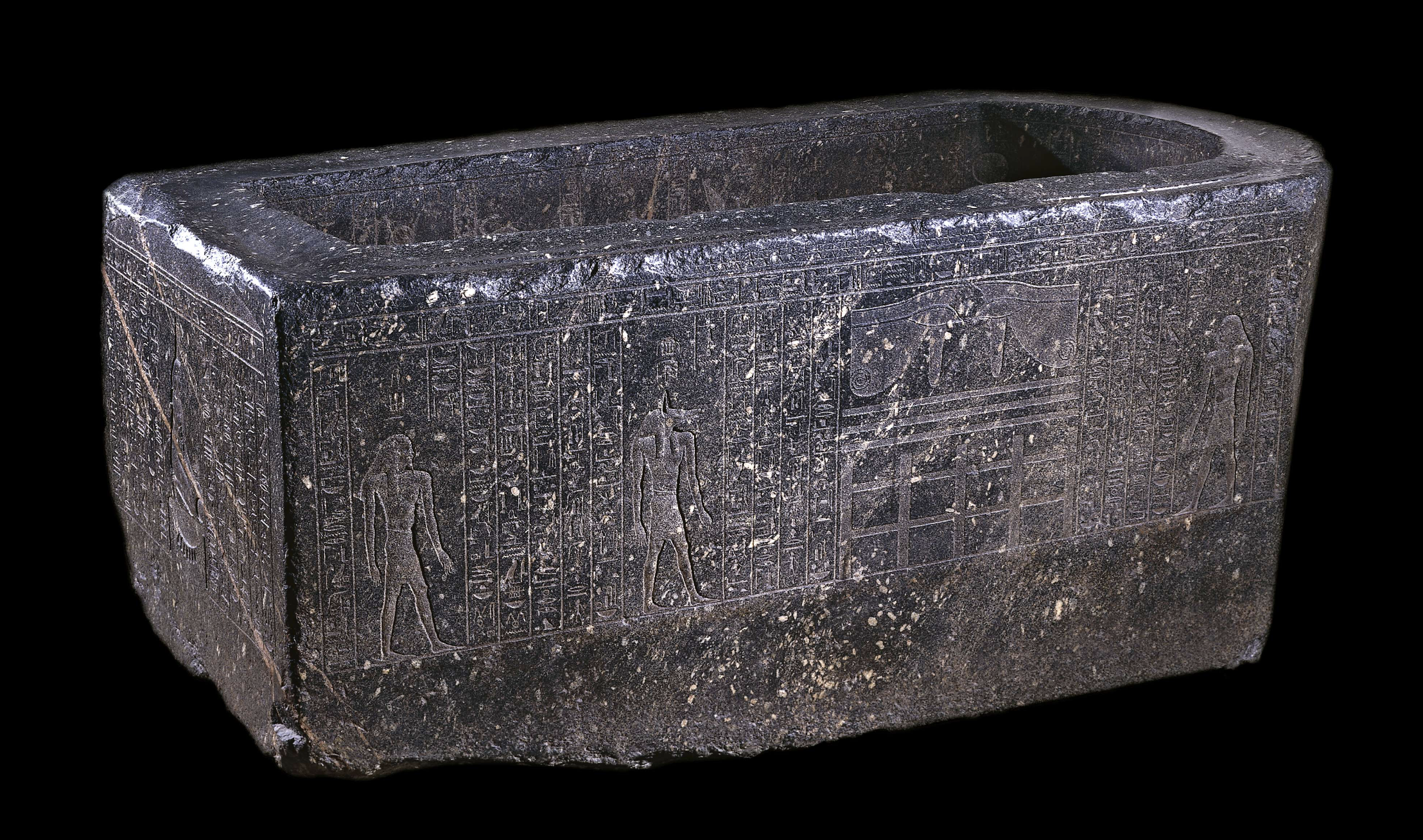Hapmen’s Enchanted Basin…
traces the life of an extraordinary object: an ancient Egyptian sarcophagus that, over two millennia, became a healing basin, a colonial artifact, and a touchstone of Cairo’s medical and urban history. Originally carved in the sixth century BCE for a treasury official named Hapmen, the granite basin was inscribed with spells from the Book of the Dead and modeled on the sarcophagus of Pharaoh Thutmose III—an act of deliberate imitation that reveals how Egyptians of later periods reimagined and revived their own pharaonic past.
Hapmen’s Sarcophagus, EA23, British Museum — © The Trustees of the British Museum
By the fifteenth century CE, the sarcophagus had been repurposed as a public water basin in Cairo, famed for its healing powers and guarded, according to chroniclers, by jinn. Around it gathered a lively market of remedies, rituals, and rumor. Its story illuminates the porous boundary between science and magic—between licensed medical practice and the healing powers attributed to talismanic stones, inscribed texts, and the occult sciences.
Across its transformations—from sarcophagus to healing basin, museum artifact, and namesake of Cairo’s modern dermatological hospital—Hapmen’s Enchanted Basin explores how Egyptians continually reworked their material past. The project examines the intersections of materiality, medicine, and memory: how enduring substances like stone shaped practices of healing and knowledge, and how the meanings of ancient objects were continually renewed through acts of reuse, reverence, and reinterpretation.
